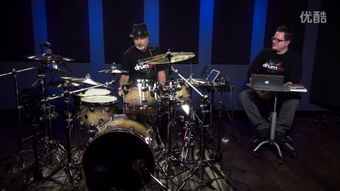Content:
Introduction: Angling for mayfly fish, also known as mayflies, can be an incredibly rewarding experience. These delicate insects are a favorite among anglers due to their unique appearance and the challenge they present to fishers. Whether you are a beginner or an experienced angler looking to refine your skills, this comprehensive guide will provide you with essential tips and a step-by-step diagram to help you catch mayfly fish like a pro.
Understanding Mayfly Fish: Before diving into the techniques, it's important to understand the mayfly fish. Mayflies are a type of aquatic insect that undergoes a complete metamorphosis, emerging from the water as adults. They are known for their slender bodies, long tails, and delicate wings. Mayflies are a significant food source for many fish species, making them a prime target for anglers.

Equipment: To begin, ensure you have the right equipment. Here's a list of essential gear for mayfly fishing:
- A lightweight rod designed for fly fishing.
- A fly reel with a smooth drag system.
- Monofilament or fluorocarbon line in appropriate strength.
- A fly rod with a 9 to 10 weight for casting larger flies.
- A selection of mayfly imitations in various sizes and colors.
- A fly box to store your flies.
- Nippers for cutting line.
Selecting the Right Location: Mayflies are commonly found in streams, rivers, and lakes. Look for areas with slow-moving water, such as pools or back eddies, where mayflies are likely to be present. Also, pay attention to the time of day, as mayflies are most active during the morning and evening.
The Mayfly Life Cycle: Understanding the mayfly life cycle is crucial for successful fishing. The four stages are:
- Egg: The mayfly eggs are laid in the water.
- Nymph: The nymph stage is the longest and most important for fishing. It is during this stage that the mayfly fish feed on aquatic insects.
- Pupa: The pupa stage is when the mayfly transitions from the nymph to the adult.
- Adult: The adult mayfly emerges from the water, often in swarms, and mates before dying.
The Art of Casting: Casting is a fundamental skill in fly fishing. Here's a step-by-step guide to casting for mayfly fishing:
- Load the rod: Begin by loading the rod by bringing the line forward from the reel, then back to the tip of the rod.
- Cast: Make a forward cast, allowing the line to fly through the air. As the line lands, gently mend it to ensure it lands on the water with a natural presentation.
- Follow through: After the fly lands, follow through with the rod, maintaining a steady tension on the line to keep the fly in place.
The Mayfly Fly Presentation: To mimic the mayfly's natural movement, use the following techniques:
- Dead Drift: Allow the fly to drift naturally with the current. This is particularly effective during the nymph stage.
- Swing: Swing the fly across the current, mimicking the mayfly's emergence from the water.
- Skating: If you're fishing during the adult stage, skate the fly across the surface of the water to mimic the mayfly's flight.
The Mayfly Fly Patterns: Here are some popular mayfly fly patterns to consider:
- Elk Hair Caddis: A classic fly pattern that imitates the adult mayfly.
- Griffith's Gnat: A simple and effective nymph pattern.
- Parachute Adams: A versatile fly that can be used during various stages of the mayfly's life cycle.
Diagrams for Reference: To help you visualize the techniques and patterns described above, here are some diagrams:
[Insert Diagram 1: Casting Technique] [Insert Diagram 2: Dead Drift Presentation] [Insert Diagram 3: Swing Technique] [Insert Diagram 4: Elk Hair Caddis Fly Pattern] [Insert Diagram 5: Griffith's Gnat Nymph Pattern] [Insert Diagram 6: Parachute Adams Fly Pattern]
Conclusion: Catching mayfly fish can be a challenging yet deeply satisfying pursuit. By understanding the mayfly's life cycle, selecting the right location, mastering the casting technique, and choosing the appropriate fly patterns, you'll be well on your way to becoming a proficient mayfly fisherman. Remember to practice your skills and enjoy the beauty of nature while you're out on the water. Happy fishing!












